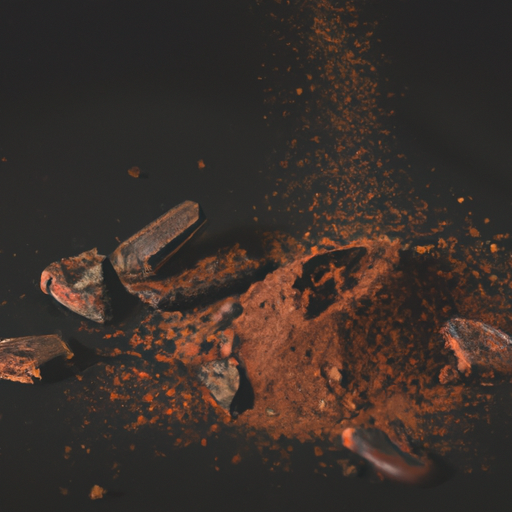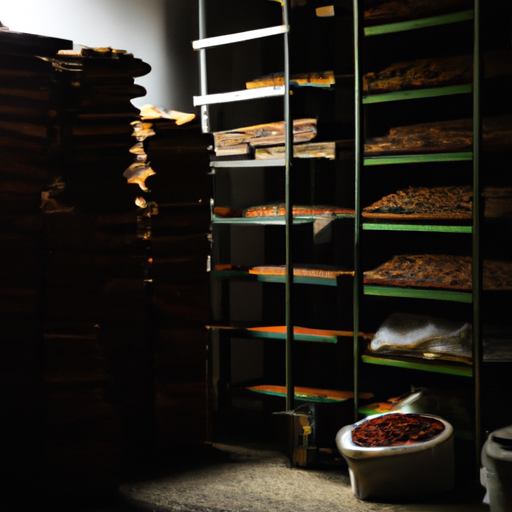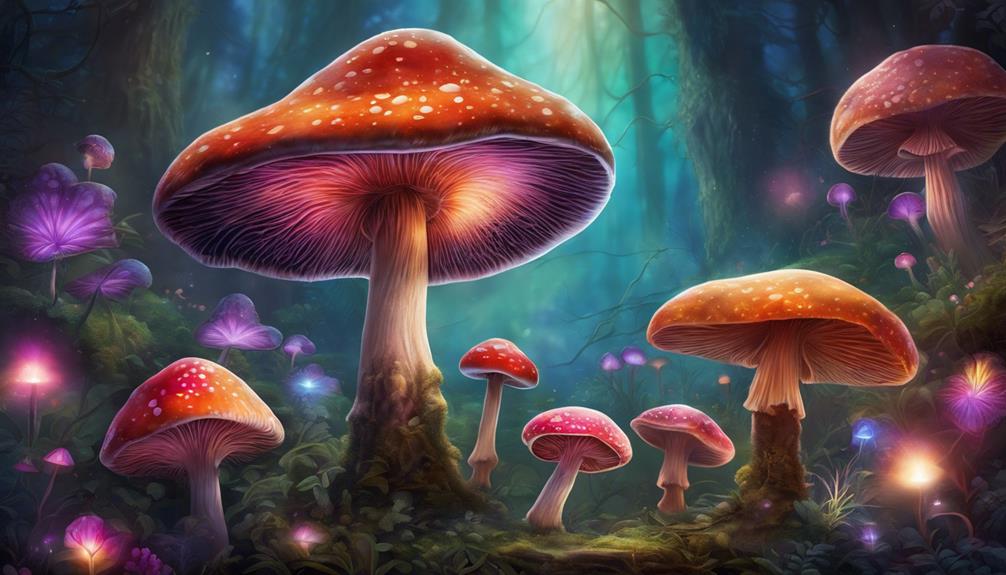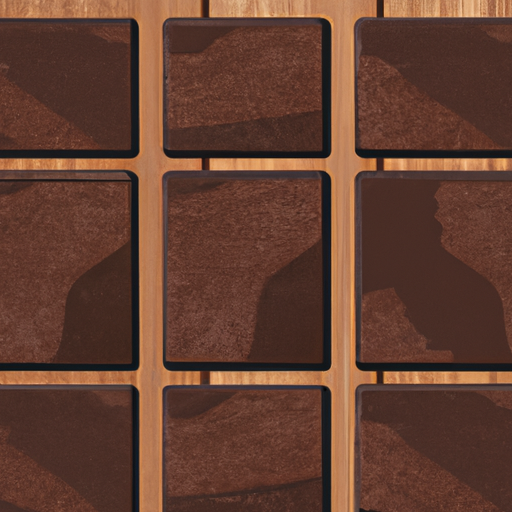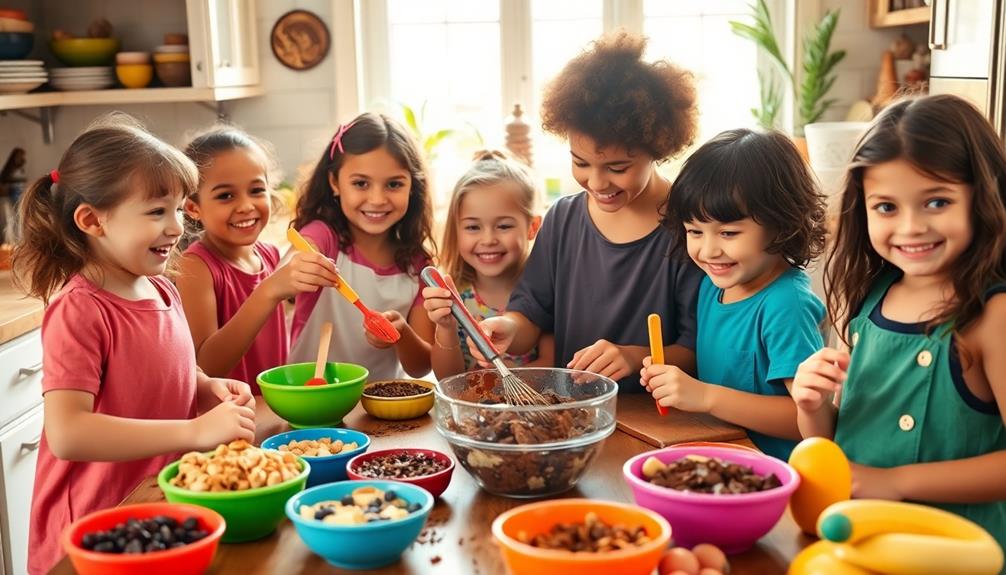I have always been intrigued by the flavor of raw cacao. I’ve heard others describe it as rich, intense, and even slightly bitter. However, I had never tried it personally until now. That’s why I made the decision to delve into the world of raw cacao and discover its flavors for myself.
Raw cacao, derived from the cacao bean, is known for its distinct flavor profile. It’s often described as having deep, earthy notes with hints of fruitiness and a slight bitterness. The flavor can be complex and nuanced, with different varieties of cacao offering unique taste profiles.
In this article, I will delve into the origins of raw cacao, its health benefits, and how to incorporate it into your recipes. I’ll also discuss the different types of raw cacao products available and where you can find them.
So come along with me as we unravel the delights of raw cacao, and discover just what this ancient ingredient tastes like.
Key Takeaways
- Raw cacao has a rich, intense, and slightly bitter flavor with deep chocolatey notes.
- It adds depth, natural sweetness, and complexity to recipes, enhancing the overall flavor profile of dishes.
- Raw cacao retains more nutrients and antioxidants compared to processed cacao, making it a beneficial ingredient.
- It is versatile in culinary applications, adding a unique twist to traditional recipes and creating unforgettable culinary experiences.
The Origins of Raw Cacao
The origins of raw cacao can be traced back to ancient civilizations, such as the Mayans and Aztecs. They believed it had divine properties and used it as currency. The cultural significance of raw cacao in these ancient civilizations cannot be understated. It was considered a sacred food, often used in rituals and ceremonies.
The process of transforming raw cacao into chocolate was a complex one. It involved fermentation, drying, roasting, and grinding. Each step was carefully executed to bring out the rich flavors and aromas of the cacao bean. The resulting chocolate was highly prized and enjoyed by the elite.
Transitioning into the subsequent section about the distinct flavor profile of raw cacao, it is important to note that the taste of raw cacao is intense and pure. It has bitter and earthy notes that set it apart from processed chocolate.
The Distinct Flavor Profile of Raw Cacao
When it comes to the distinct flavor profile of raw cacao, there are three key points that stand out to me.
First, it has earthy and bitter notes that give it a unique complexity.
Second, there are rich and chocolatey undertones that make it incredibly indulgent.
And finally, there are nutty and fruity flavors that add a delightful twist to the overall taste.
Overall, the flavor of raw cacao is a delightful combination of these elements that is sure to please any chocolate lover.
Earthy and Bitter Notes
With its earthy and bitter notes, raw cacao offers a flavor profile that transports your taste buds to the depths of the rainforest. The earthy sweetness of raw cacao is enchanting, reminiscent of the rich soil it grows in. It adds a unique depth to the overall taste experience.
The bitterness, on the other hand, balances the sweetness and adds a touch of complexity. The combination of these contrasting flavors creates a harmonious dance on your palate. As you savor the earthy and bitter notes of raw cacao, you can almost imagine yourself surrounded by lush greenery and the gentle hum of wildlife. It’s a truly immersive experience.
And just when you think the journey couldn’t get any better, the rich and chocolatey undertones emerge, taking you deeper into the world of raw cacao’s deliciousness.
Rich and Chocolatey Undertones
Indulge in the velvety decadence of raw cacao’s rich and chocolatey undertones. Take yourself on a blissful journey of pure cocoa bliss. As soon as a piece of raw cacao touches my tongue, a wave of deep, dark chocolate flavor envelops my palate. The taste is incredibly smooth and luxurious, with a velvety texture that melts in my mouth. It’s like savoring a piece of the finest, most indulgent chocolate imaginable.
But there’s more to it than just chocolate. Amidst the richness, I detect subtle floral undertones that add a delicate and enchanting note to the overall experience. These undertones elevate the raw cacao to a level of sophistication that is truly awe-inspiring.
Transitioning seamlessly into the next section, I find myself eagerly anticipating the nutty and fruity flavors that are sure to delight my taste buds.
Nutty and Fruity Flavors
Get ready to experience the delightful symphony of nutty and fruity flavors dancing on your taste buds.
When it comes to raw cacao, the options for buying and trying different flavor combinations are endless. The nutty taste adds a pleasant depth to the overall profile, reminiscent of roasted almonds or hazelnuts. It’s like taking a bite into a creamy, rich nut butter that perfectly complements the chocolate notes.
As for the fruity flavors, think of a burst of sweetness that reminds you of ripe berries or tropical fruits. The combination of these flavors creates a harmonious balance that is both satisfying and indulgent.
Now, let’s dive into the health benefits of raw cacao and explore how it can nourish our bodies and minds.
The Health Benefits of Raw Cacao
Raw cacao offers a rich and intense flavor that can be described as a decadent blend of bitter, nutty, and slightly fruity notes. It is a delightful treat for both the taste buds and the body. Not only does it satisfy my craving for something indulgent, but it also provides numerous health benefits.
The antioxidant properties of raw cacao are remarkable. They help to combat free radicals and reduce inflammation in the body. Additionally, raw cacao can have a positive impact on mood and energy levels. This is thanks to its natural compounds that stimulate the production of endorphins and serotonin.
Incorporating raw cacao into my recipes has become a joy. It adds depth and complexity to everything from smoothies to baked goods. Now, let’s explore how to seamlessly include raw cacao into your favorite dishes and experience its incredible taste and health benefits.
How to Incorporate Raw Cacao into Your Recipes
One way to effortlessly infuse your favorite dishes with the rich and intense flavor of raw cacao is by exploring creative recipes that will leave your taste buds craving for more.
Incorporating raw cacao in everyday meals can add a healthier twist to your diet. Start your day off right by adding raw cacao powder to your morning smoothie or oatmeal for a decadent chocolatey kick.
For a guilt-free dessert, try making raw cacao energy balls with dates, nuts, and a sprinkle of cacao nibs.
You can also use raw cacao in savory recipes like chili or mole sauce for a unique depth of flavor.
Pairing raw cacao with other ingredients opens up a world of culinary possibilities, allowing you to create dishes that are both delicious and nutritious.
Pairing Raw Cacao with Other Ingredients
To enhance the flavor of your dishes, try pairing raw cacao with unexpected ingredients like chili peppers. Research shows that the combination can create a unique and irresistible taste sensation. Here are four ways you can experiment with pairing raw cacao with spices:
-
Raw Cacao and Cinnamon: The warmth and earthiness of cinnamon perfectly complement the rich and bitter notes of raw cacao, creating a comforting and indulgent flavor profile.
-
Raw Cacao and Cayenne Pepper: The heat from the cayenne pepper adds a fiery kick to the smooth and velvety raw cacao, resulting in a spicy yet satisfying combination.
-
Raw Cacao and Cardamom: The aromatic and slightly citrusy flavor of cardamom enhances the complex taste of raw cacao, adding a touch of sophistication to your desserts.
-
Raw Cacao and Nutmeg: The warm and nutty flavor of nutmeg pairs harmoniously with the deep and intense flavors of raw cacao, creating a cozy and comforting experience.
By pairing raw cacao with spices, you can elevate the taste of your dishes and create unique and delightful raw cacao desserts.
Transitioning into the subsequent section about different types of raw cacao products, you’ll discover a world of possibilities to incorporate this versatile ingredient into your culinary creations.
Different Types of Raw Cacao Products
Now that we’ve explored the delicious combinations of raw cacao with other ingredients, let’s dive into the world of different types of raw cacao products.
It’s fascinating to see how cacao can be processed in various ways to create unique flavors and textures. Raw cacao is the purest form, obtained by cold-pressing unroasted cacao beans, which retains all the natural nutrients and antioxidants.
On the other hand, processed cacao undergoes additional steps like roasting and refining, which can alter its taste and nutritional value. Each type has its own distinct characteristics, from the intense bitterness of raw cacao to the smoother, sweeter notes of processed cacao.
Exploring these different cacao processing methods opens up a world of possibilities for creating delectable treats. Speaking of which, let’s now explore where to buy raw cacao and get started on our culinary adventure.
Where to Buy Raw Cacao
If you’re looking to embark on a culinary adventure with raw cacao, why not explore the various places where you can purchase this pure, unroasted delight?
One of the benefits of consuming raw cacao versus processed cacao is that it retains more of its natural nutrients and antioxidants. It has a rich, intense flavor that is slightly bitter and deeply chocolatey.
Raw cacao can be used in a variety of recipes, such as smoothies, desserts, and baked goods. It adds a bold, decadent taste that enhances the overall flavor profile of the dish. Whether you’re making a velvety chocolate mousse or a batch of chewy brownies, raw cacao is a key ingredient that will take your creations to the next level.
Now, let’s move on to some tips for storing and using raw cacao.
Tips for Storing and Using Raw Cacao
Get ready to elevate your culinary creations with raw cacao by learning some essential tips for storing and using this divine ingredient.
When it comes to storing methods, remember that raw cacao is sensitive to heat, light, and moisture. Keep it in an airtight container in a cool, dark place to preserve its flavor and texture.
Now, let’s explore the culinary uses of raw cacao.
-
Start your day with a decadent raw cacao smoothie bowl, topped with fresh fruits and nuts for added crunch.
-
Indulge in a rich and velvety raw cacao mousse, made with avocado for a healthy twist.
-
Create a heavenly hot chocolate by melting raw cacao with your favorite plant-based milk and a touch of sweetener.
-
Add depth to your baked goods by substituting regular cocoa powder with raw cacao, resulting in a more intense chocolate flavor.
-
Sprinkle raw cacao nibs over your morning oatmeal or yogurt for a delightful crunch and a boost of antioxidants.
With these tips in mind, you’ll be able to unlock the full potential of raw cacao in your culinary adventures.
Now, let’s move on to exploring the delights of raw cacao in the conclusion.
Conclusion: Exploring the Delights of Raw Cacao
Immerse yourself in the captivating world of raw cacao and savor the endless possibilities it brings to your culinary creations. Raw cacao is a true delight for any dessert lover, adding a rich and intense flavor that elevates even the simplest of treats. Whether it’s a velvety chocolate mousse or a decadent brownie, exploring raw cacao in desserts opens up a world of indulgence. The depth of flavor and natural sweetness of raw cacao bring a unique twist to traditional recipes, making them truly unforgettable.
But the versatility of raw cacao doesn’t stop at desserts. It can also be incorporated into beverages, adding a deep and complex taste to your favorite drinks. From hot chocolate to smoothies, the addition of raw cacao creates a luxurious and indulgent experience. The earthy notes and subtle bitterness of raw cacao perfectly balance the sweetness in beverages, creating a harmonious flavor profile that is simply irresistible.
In conclusion, raw cacao is a culinary treasure that should be explored and embraced. Its ability to elevate desserts and enhance beverages is truly remarkable. So go ahead, discover the wonders of raw cacao and let your taste buds embark on a delicious adventure.
Frequently Asked Questions
Can raw cacao be used as a substitute for cocoa powder in baking recipes?
Yes, raw cacao can be used as a substitute for cocoa powder in baking recipes. It provides a rich, intense flavor that adds depth to desserts. Additionally, it offers numerous health benefits, such as antioxidants and minerals.
Does raw cacao contain caffeine?
Yes, raw cacao does contain caffeine. However, it also provides numerous health benefits such as being rich in antioxidants and minerals. I love using raw cacao in recipes like smoothies, desserts, and homemade chocolate.
Can raw cacao be consumed by people with allergies to chocolate?
Raw cacao is a miraculous elixir for allergy sufferers! Its healing properties soothe my body and mind. I’ve discovered alternative uses like adding it to smoothies or making homemade face masks. It’s a chocolate-free delight!
Is raw cacao suitable for individuals following a vegan or vegetarian diet?
Raw cacao is a great option for vegans and vegetarians as it is rich in nutrients like iron, magnesium, and antioxidants. It can be used in various delicious recipes like vegan brownies, smoothies, and energy balls.
Are there any potential side effects of consuming raw cacao in excessive amounts?
Consuming excessive amounts of raw cacao can lead to potential side effects such as increased heart rate, digestive issues, and migraines. It is important to stick to the recommended daily intake to avoid these health issues.
Is the Taste of Raw Cacao Nibs Similar to Raw Cacao?
Yes, the raw cacao nibs taste is similar to raw cacao, but with a more intense and slightly bitter flavor. The nibs retain the natural taste of the cacao bean and provide a satisfyingly rich and chocolatey experience. Many people enjoy adding them to smoothies, oatmeal, or baked goods for a delicious boost of flavor.
Conclusion
As I conclude my exploration of the delights of raw cacao, I am left in awe of its incredible flavor and numerous health benefits.
One interesting statistic that caught my attention is that raw cacao contains over 40 times the antioxidants of blueberries, making it a powerhouse of nutrition.
Its rich and intense taste, with its hints of bitterness and fruity undertones, is truly a treat for the senses.
Whether you incorporate it into your recipes or enjoy it on its own, raw cacao is sure to leave a lasting impression on your palate.

